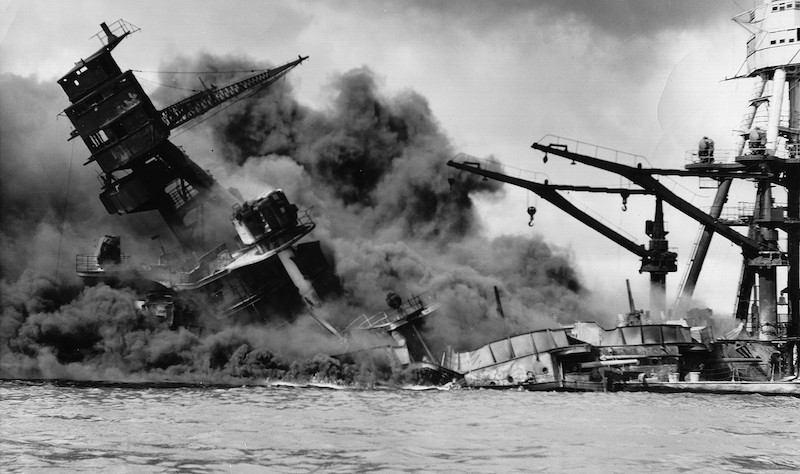When Isabel Allende wrote Eva Luna in 1987, it was based on a woman’s struggles in an unnamed South American country. Many had theorised that while from the dictatorship, the armed rebellion and the corruption that country sounded a lot like Chile (the author’s original nationality) the social context and geography resembled Venezuela a lot more. However, the history was neither precise enough and the criticism never specific enough to make a significant critique of either country. The vagaries fail to fully touch the soul of the reader and leave a certain sense of dissatisfaction. In comparison, when she wrote The Japanese Lover in 2015, Allende was very explicit about the context and country. The Japanese Lover is based in present-day San Francisco but skips back to Poland, France and the United States during World War Two. The story simultaneously chronicles the life of Alma Belasco who leaves Poland in 1939 after Nazis arrive into Poland and the tale of Irina Bazili, a care worker who at the start of the novel begins working at Lark House, an eccentric nursing home in San Francisco where Belasco now resides.
The description of the care home itself sets the stage for the story. Allende describes Lark House as a less than orthodox care home where about 250 octogenarians reside. However, what sets it apart from other such old homes is that it resides free thinkers, activists and hippies of the previous generation belonging to San Francisco. Irina, who is a 23-year-old woman originally from Moldova, begins work at the home and there strikes up a friendship with Alma and her nephew. As the story deepens, we learn that Irina is running away from secrets of her own. However, it is the story of Alma that is most intriguing.

After Alma leaves Poland, she comes to live with her uncle and aunt in San Francisco. There at her uncle, Isaac Belasco’s home, against the back drop of the Great Depression, she comes to live with her family who is flourishing in these leaner times. Within the Belasco residence, is employed a Japanese gardener by the name of Takao Fukuda, whom Isaac befriends as the two garden together on his property. Here Alma meets Takao’s son, Ichimei and thus begins a fledgling friendship that transforms into a lifelong romance. This is where the story takes an interesting turn because Allende chooses to detail a chapter in American history that is seldom talked about and often glossed over by the media and government officials.
Through these characters as the story progresses further, keeping in mind the political and social context at play during the era, Allende begins to weave some important events within the stories of her characters. One such fact is the 1913 law that prohibited an Issei (a Japanese immigrant to North America) from becoming an American citizen, owning land or buying property.
Amidst this backdrop, on December 7, 1941, a surprise military strike is conducted on the United States on Pearl Harbour in Honolulu, Territory of Hawaii by the Imperial Japanese Navy Air Service. One major result of this attack is that it changes the American isolationist mentality that they had adapted so far. However, another result of the attack - one that is a central point in Allende’s novel - is how it impacts the Japanese immigrant population in America at the time.

Allende goes on to describe how the hatred for East Asians was further aggravated in the United States after the Pearl Harbour attack. The Japanese population who had lived in the country for years as well as their children and grandchildren, who were American citizens, were all now equal targets against whom hate was levied by the other civilians as well as the American government. More specifically, the government now treated them as suspects who could be colluding with the ‘enemy.’ Soon after the attack, American officials began coming to the homes of Japanese Americans living across America, investigating to see if they could possibly be spies or rebels. Japanese fisherman in possession of shortwave radios – the only mode for them to communicate with the land – were considered suspicious enough to qualify for arrest. Farmers using dynamite to move tree trunks and rocks from their fields, were suspected of terrorism. In fact, binoculars, kitchen knives, cameras – anything and everything was viewed as suspect behaviour and these men and their families were rounded up. The Japanese community who were never on equal footing with other Americans to begin with, were now more vulnerable than ever. A war that was much bigger than them had swallowed up any of the dignity and autonomy they once might have had in this country and now they were at the mercy of the American government.
Two months later, President Roosevelt signed the order to evacuate all persons of Japanese origins from Pacific coast states of California, Oregan and Washington for ‘reasons of military security.’ Arizona, Idaho, Montana, Nevada and Utah were also declared military zones.
By March of 1942 an evacuation was announced of the Japanese population. The Japanese couldn’t go outside a radius of five miles from their homes without a special permit and had to follow a nighttime curfew from eight pm to six am. The authorities began to raid their houses, their bank accounts were frozen and influential men from the Japanese community, whom the authorities felt could incite treason, were taken from their homes to undisclosed locations. As Allende describes, by the August of that year, over 120,000 had been evacuated: ‘Old people snatched from hospitals, babies from orphanages and mental patients from asylums.’
The Fukuda family was forced to lock their home and pack their possession into a single bag and present themselves at the buses waiting to carry them off to internment. The internment was given to the Issei as alternate to the possibility of being tried for treason. As Allende describes, these families gave themselves up because between the two choices, there really wasn’t much of a choice. Moreover, they thought that my giving themselves up, the Issei thought they were proving their loyalty to the United States. As Allende observes, two-thirds of those evacuated at the time were born in the United States and were American citizens.
The Fukudas, for the first six months, were housed at a race track at Tanforan, in the city of San Bruno, where the family was made to feel the humiliation of being reduced to living in the animal shed on simple cots. After that, the family was sent to a camp in Topaz, a desert area in Utah.
Inside Topaz, families live huddled inside barracks and children do their homework on the ground using benches as desks - all while being encased in barbed-wire fences where armed guards and watch towers were carefully placed to keep an eye on them at all times.

In December 1944 – nearly three years after the evacuation was announced - the Supreme Court unanimously declared the no American citizen could be detained without a reason. However, so greatly had the Fukuda family suffered by this point the war (like hundreds of other Japanese Americans at the time) that their release from the concentration camp was of little respite to them.
The internment of Japanese Americans by the American government is a testament to how a country that has flourished on its immigrant population chose to ‘other’ certain nationalities. It reminds us of the fact that hate politics is not a recent Trump phenomenon but has been a part of American history long before the fact. The treatment of Muslims after the September 11 attacks, those who had been born and brought up in America isn’t an isolated occurrence but rather a vicious cycle based on policy and ideology of the American military and civilian leaders who have continued to treat their immigrant population this way. The fact that any reparations or apology in lieu of reparations and in fact any responsibility whatsoever has been shirked away by the American government on on the internment is a testament to the fact that the country will never acknowledge nor grow or change their treatment of their immigrant population.
In light of this, novels like Allende’s play an important role in holding pieces of long forgotten history – those actions that have been swept under the rug – and encapsulating them for readers so they are forever documented and remembered. That such suffering and losses are neither forgotten nor ignored. Many other fictional authors have attempted to do so for other eminent events and injustices in contemporary or ancient history. For instance, Elif Shafak wrote Bastard of Istanbul and described the genocide of Armenians by the Turkish government, Khaled Hosseini detailed the atrocities of Taliban in Afghanistan in A Thousand Splendid Suns and Fatima Bhutto talked about the disillusionment of the younger generation who choose to leave their country behind to enlist with the Islamic State.
Each of these stories play an important role in documenting significant events of the times and personalise them by weaving them in with fictional characters that make the story more touching and alive for their readers. Thus highlighting why it is important that fictional authors pick up important moments in history to emphasise the significance of the era.
